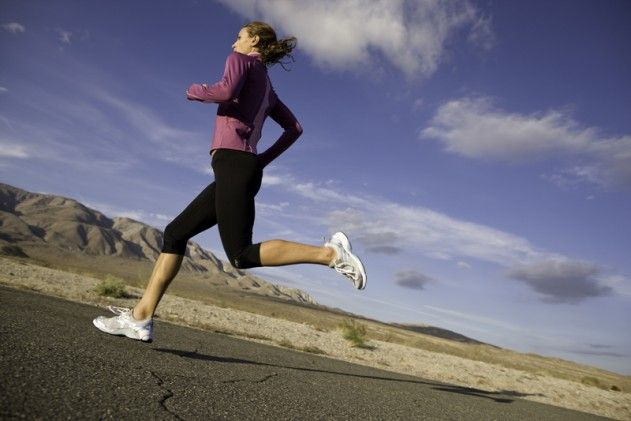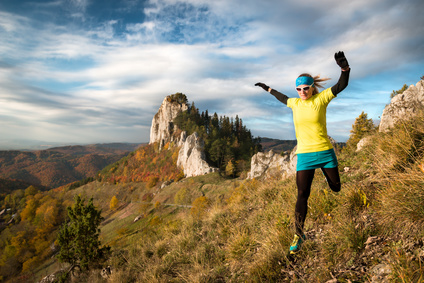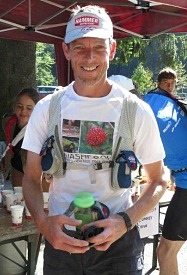Trail Running Technique

In his second post, running coach and Ultratrail athlete Jonathan Worswick talks about trail running technique. This is part of a series of posts leading up to our Trail Running Holiday.
Trail Running Technique is the one area most of us neglect to practice. We may put in the miles, add hill runs and speed work, but actually, just taking time out to think about our trail running technique will not only improve performance, but also help prevent injury.
Below I am going to combine top tips from Ed Kerry, the Run Doctor, with my own, to give you all you need to get started on the road to improved trail running technique.
1. Rhythm
Otherwise known as cadence (stride rate). A high proportion of runners will be running at 160bpm. This encourages heel striking and poor posture. The correct cadence for runners is 184bpm. This will help with the foot strike and allow you to remain in a good postural position.
Fix: Setting a metronome to 184bpm and trying to run in time with the beat to increase your cadence. Over time, a higher cadence will feel natural and you won’t need the timer.
Check out this link, for the top 5 running apps to improve your cadence.
2. Posture
 Your posture is absolutely the most important thing when you run.
Your posture is absolutely the most important thing when you run.
Fix: As you run, keep your head and chest upright and relax as much as possible; the whole of your upper body should remain stable, but not be tense.
3. Relax
Staying relaxed is key, as this will allow you to enjoy your running, and not put too much pressure through the joints of the body.
Fix: A good warm-up to loosen the body will help you run in a relaxed manner. Ease into the run slowly, then build speed.
4. Arm Swings
Efficient arm swing helps use less energy, which means that energy can be used in the legs.
Fix: Keep your arm angle at 90 degrees or less throughout the arm swing. Don’t let your arm angle open up. Confine your arm swing to your shoulders which should be relaxed, there should be no excess movement in the elbow, wrist or hands.
5. Skipping

Technical descents are where we all can improve on speed.
Fix: Think of skipping down technical descents, light footed like a ballet dancer. Often you may not know whether a rock or log will move, so by landing lightly, you can often get away with landing on less stable surfaces.
Ultramarathon runner Geoff Roes states in his article Downhill Rhythm, that almost anyone can run faster down technical descents, than what they ‘should’ be able to do based on their ability on flat terrain. It just takes practice and determination.
For those wanting to get a little more technical, then the “The science of running,” by Steve Magness is an excellent book .
Of course, as well as trail running technique, training is a necessity.
Training Basics
I will talk in more detail about training as these posts continue. But at the moment lets start with the basics. The first thing is to record your current weekly mileage. Get your body used to regular running. If you are just beginning, then during the first weeks start with 20 minutes running per day, over 3 days. As you feel more comfortable increase this to 5 or 6 days per week. Run and walk if you need to.
To avoid injury, never increase your mileage by more than 10 percent in a week.
Remember a basic aim is to increase distance, and therefore, the time on your feet.
Bear in mind on our Trail Running Holiday in the Spanish Pyrenees we will run between 100km (60+ miles) and 140km (86 miles). Of course you can take a day off, or switch to walking at any point during the week, as we offer daily fully guided walks.
When you start, make sure you follow the techniques we have talked about, starting with incorrect technique can lead to injuries.
Include cross training, especially core strength exercises.
As distance increases remember any day can be split up into two runs. Your running has to fit in with your work, so plan accordingly.
If anything begins to hurt, whether it is feet, shins, knees, hips or back, then take some time off.
I have included a weekly routine below which you can adapt, adding your own mileage for each run:
[table id=2 /]

Gear
Finally gear is important and I will be talking about this in depth in future posts. What I will say now, is that if you haven’t tried running poles yet, then I recommend getting some. Running poles can be very helpful for downhill as well as uphill. They give you added stability as well as saving your core muscles. When racing in Europe 80% of the field will be using poles.

Check out availability on our Trail Running Holiday Pyrenees.
Until next time “enjoy the trail”.
Jonathan Worswick is our guide in the Pyrenees, a running coach and Ultratrail athlete.
If you want us to notify you when there is a new post from Jonathan then email us at holiday@aragonactive.com
Share this page…


